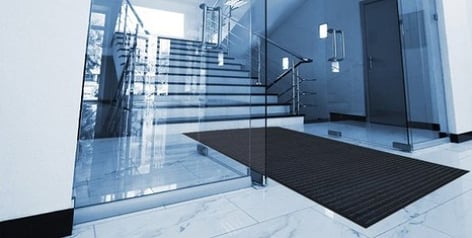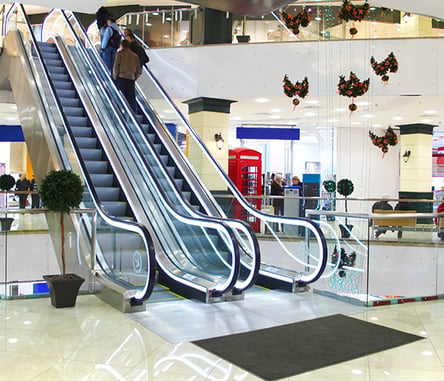Subscribe Today & Never Miss a Post!
Recent Posts
Floor Mats are Not Just for Entries Any More
Many facility managers consider installing floor mats only at building entries. While it is true that all commercial facilities, such as offices and office buildings, should have as much as 15-feet of matting installed at all entrances, there are many other locations in the facility where mats should be installed as well.

Invariably, these different types of mats are needed to welcome visitors into the building, keep the building cleaner and healthier, ensure safety, enhance worker productivity, and even prevent electronics from being damaged.
For instance, we mentioned that most facility managers know that matting systems should be installed at building entries. However, they should take this a step further and install what are called “logo” or “image” mats. These mats welcome visitors into a facility. Crown Matting offers flocked mats as well as HD Jet-print for high traction.
Further, some logo/image mats are designed to scrape and capture soil, removing them from shoe bottoms. This means they are doing “double duty:” keeping the facility clean and healthy while also welcoming building users.
Other places where floor mats are needed in office locations include the following:
• Around computers, copiers, and other electronics. Install Comfort-King Anti-static/Anti-Fatigue mats to help prevent static electricity, and keep office electronics protected
• At transitional points. An example of a transitional point is a walkway from the warehouse into the main office area. There are many reasons why floor mats are needed at transition points. They help prevent contaminants from one area being walked into another. Further, if one floor is damp – such as a carpet - and moisture has built up on shoes, then walking on to a near-by hard surface floor could be dangerous, potentially causing a slip and fall accident to occur. Walk-n-Clean offered by Crown Matting would be a good solution for transition areas.

• In and around elevators and escalators. We should view these as transition points as well. By installing a Marathon premium mat in these areas, it prevents soil from one area of the facility from being walked into another.
• A “plush” Rely-On Olefin mat should be installed under water fountains. While the mat does absorb some moisture, what is really happening is that the moisture runs down the Olefin fibers, preventing what is called “wicking.” When wicking occurs, moisture works its way back up carpet fibers, allowing it to come in contact with shoe bottoms, spread to other areas of the facility, or even cause a slip and fall accident. With an Olefin mat, the moisture is trapped below the walking surface, keeping the walking area safe for building users.
• Most office facilities have food service areas. A drainage mat such as Safewalk should be installed in food preparation areas. These allow spills and debris to settle below the mat surface, helping to promote safety and keep moisture and soils from spreading.
• Counters and standing areas. Many facility managers believe anti-fatigue mats are mostly designed for installation in industrial work areas. However, anti-fatigue mats should be installed wherever building users must stand for long periods of time, for instance, around copy machines, standing workstations, or customer service counters. Along with reducing pain and fatigue, studies indicate that anti-fatigue mats can help improve worker productivity. Crown's patented Zedlan foam technology provides premium anti-fatigue relief.
• Gym in the office? There are many different types of attractive, high-performance mats now available for office gyms.
Facility managers are encouraged to think “outside-the-box,” so to speak. For instance, one commercial office building had enclosed walkways at the back of the building, running the length of the facility. These walkways were used mainly by service workers.
Mats were installed in these walkways. After a few months, cleaning professionals found that these floors were staying cleaner, requiring less frequent floor refinishing. Further, carpeted areas directly off these back walkways were remaining cleaner for more extended periods. Installing these mats not only was keeping the facility cleaner, but also helping to reduce cleaning costs to boot.
For more information of mats designed specifically for office use, contact a Crown Matting Specialist.
Topics: Entrance mats, Zedlan, ergonomic mats, Comfort-King foam
Comments